Hoping it’s ok to have 2 species in the 1 photo, if not ill sort something.
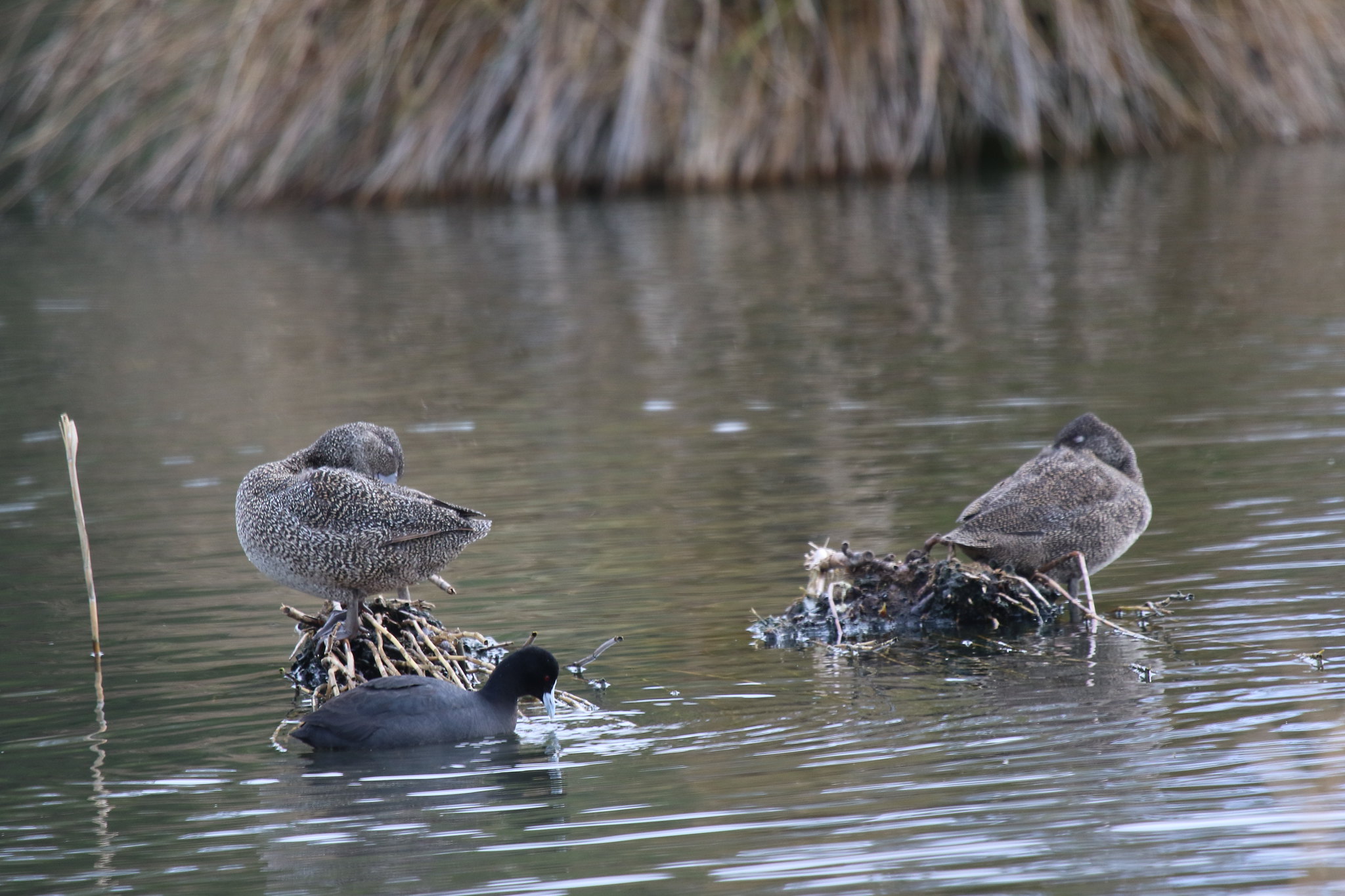 Freckled Ducks by Dale Watson, on Flickr
Freckled Ducks by Dale Watson, on Flickr
1. Freckled Duck - new to me, and rare In Tasmnania, sighted at 2 totally separate locations I’ve recent months.
2. Eurasian Coot - very common around our parts, thought it was nice to get 2 species in 1 photo.










Its not ruled out - so its ruled in - 2 in 1 is good :-) I'd love to see those freckled ducks...
Next series all taken Goulds Lagoon 1st September, 17 identifiable species, but couldnt get photos of all. Will hopefully return for better photos soon.
Thought I would put multiple posts in one thread to make them esier to view together.
3. Black Swan Family
4.Chestnut Teal (female)
5. Muscovy Pair - larger male, female hard to see - poor light blends in.
6. Great Cormorant
Dale Huonville, Tasmania
Great start, Dale. Looks like you enjoyed some good light. That female Muscovy is well hidden even in the beautiful light.
You probably will not see anything from me for another week but I hope to make up for the delay with a few birds. Looking forward to more from you and the others.
Nice one Dale - Haven't seen Muscovy ducks either, very unusual lookin male ( and vanishing female!) :-)
Been out trying to catch up over the past few days. Got a good number today, but still behind. Photos of 29 species today, but some I have already posted. Any how here we go.
7. Forest Raven - can drive within a few feet at 100kph on the roadside, stop for a photo, goodluck with that!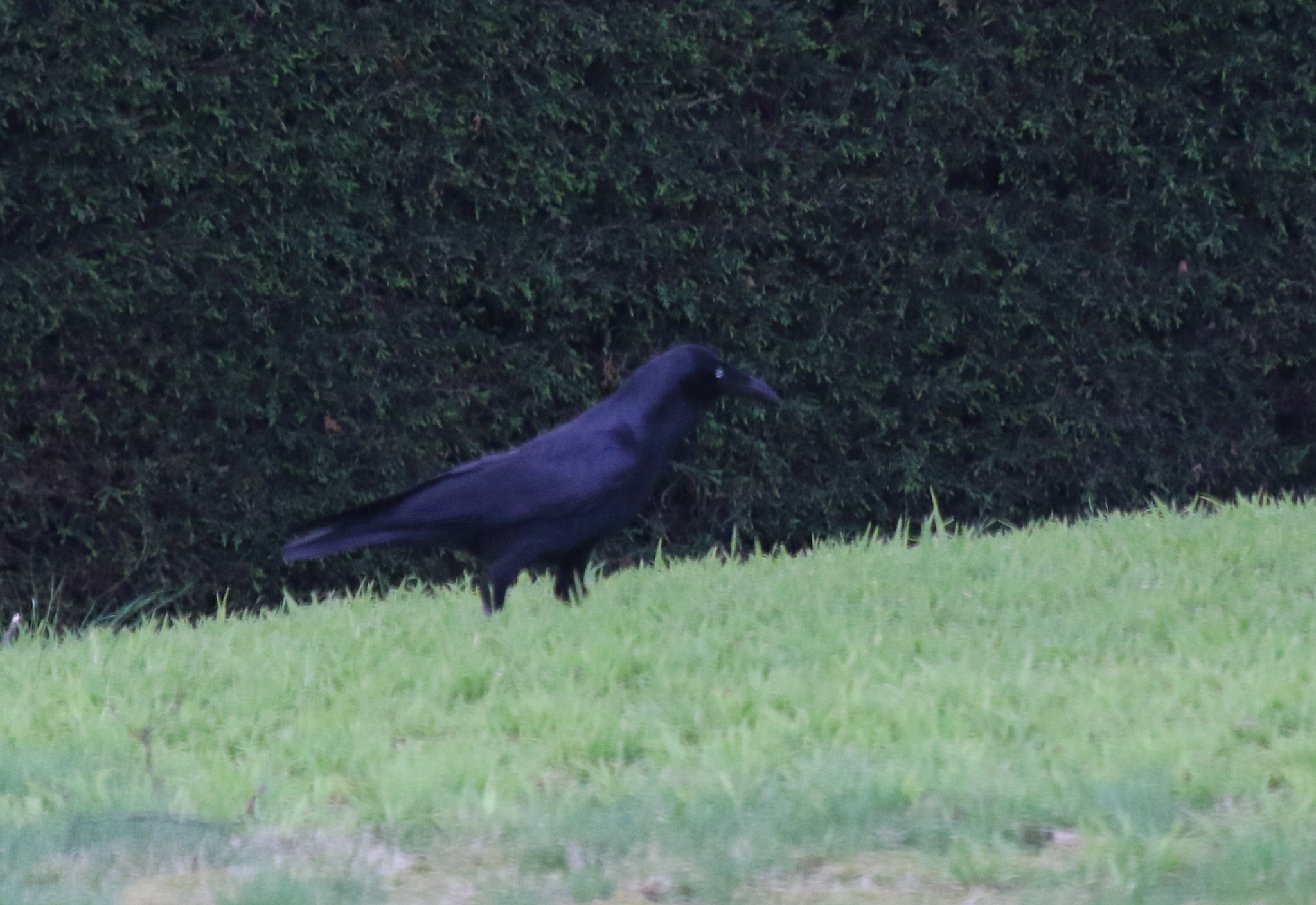 Forest Raven by Dale Watson, on Flickr
Forest Raven by Dale Watson, on Flickr
8. Little Pied Cormorant
9. Little Black Cormorant (the Oyster Catcher I will post separately). Cormorants by Dale Watson, on Flickr
Cormorants by Dale Watson, on Flickr
10. Australian Pied Oyster Catcher - I have better photos, but they are from before the challenge started. Australian Pied Oyster Catcher by Dale Watson, on Flickr
Australian Pied Oyster Catcher by Dale Watson, on Flickr
11. Australian Peilcans - fair way in the distance. Australian Pelican by Dale Watson, on Flickr
Australian Pelican by Dale Watson, on Flickr
12. Hoary Headed Grebes from along way away (heavily cropped). Hoary Headed Grebe by Dale Watson, on Flickr
Hoary Headed Grebe by Dale Watson, on Flickr
13. Masked Lapwing (Back Shouldered) and 2 of her 4 chicks.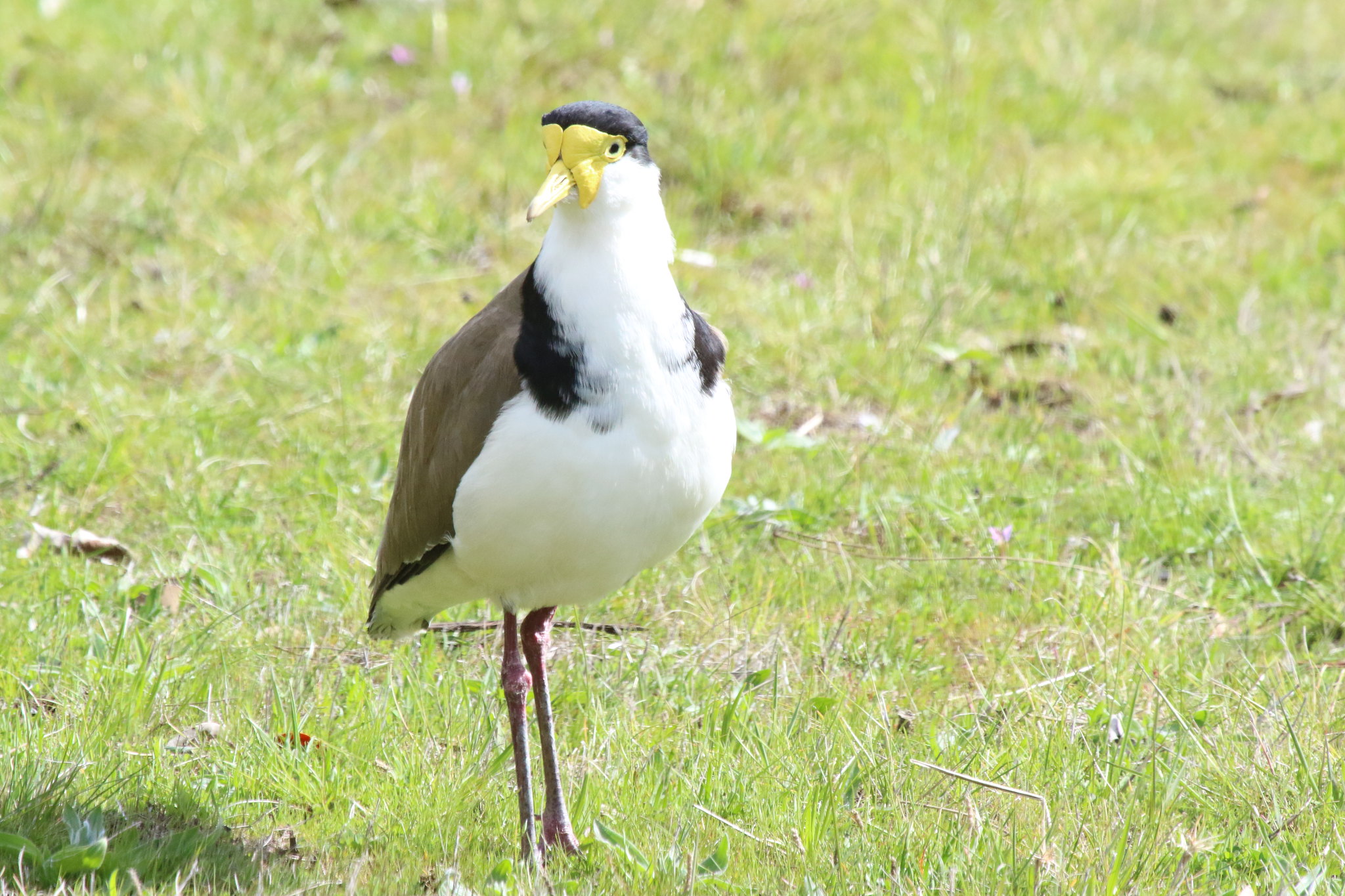 Masked Lapwing (Black Shouldered) by Dale Watson, on Flickr
Masked Lapwing (Black Shouldered) by Dale Watson, on Flickr Masked Lapwing Chick by Dale Watson, on Flickr
Masked Lapwing Chick by Dale Watson, on Flickr
14. Welcome Swallow - these were everwhere, but trying to get one still for long enough! Welcome Swallow by Dale Watson, on Flickr
Welcome Swallow by Dale Watson, on Flickr
15. Dusky Woodswallow - again hard to get close enough.
16.Super Fairy Wren
17. Australian Magpie 2Q5A8763 by Dale Watson, on Flickr
2Q5A8763 by Dale Watson, on Flickr
18. Australian Wood Ducks 2Q5A8747 by Dale Watson, on Flickr
2Q5A8747 by Dale Watson, on Flickr
19. Pacific Black Duck 2Q5A8742 by Dale Watson, on Flickr
2Q5A8742 by Dale Watson, on Flickr
20. Little Corella 2Q5A8720 by Dale Watson, on Flickr
2Q5A8720 by Dale Watson, on Flickr
21. Long Billed Corella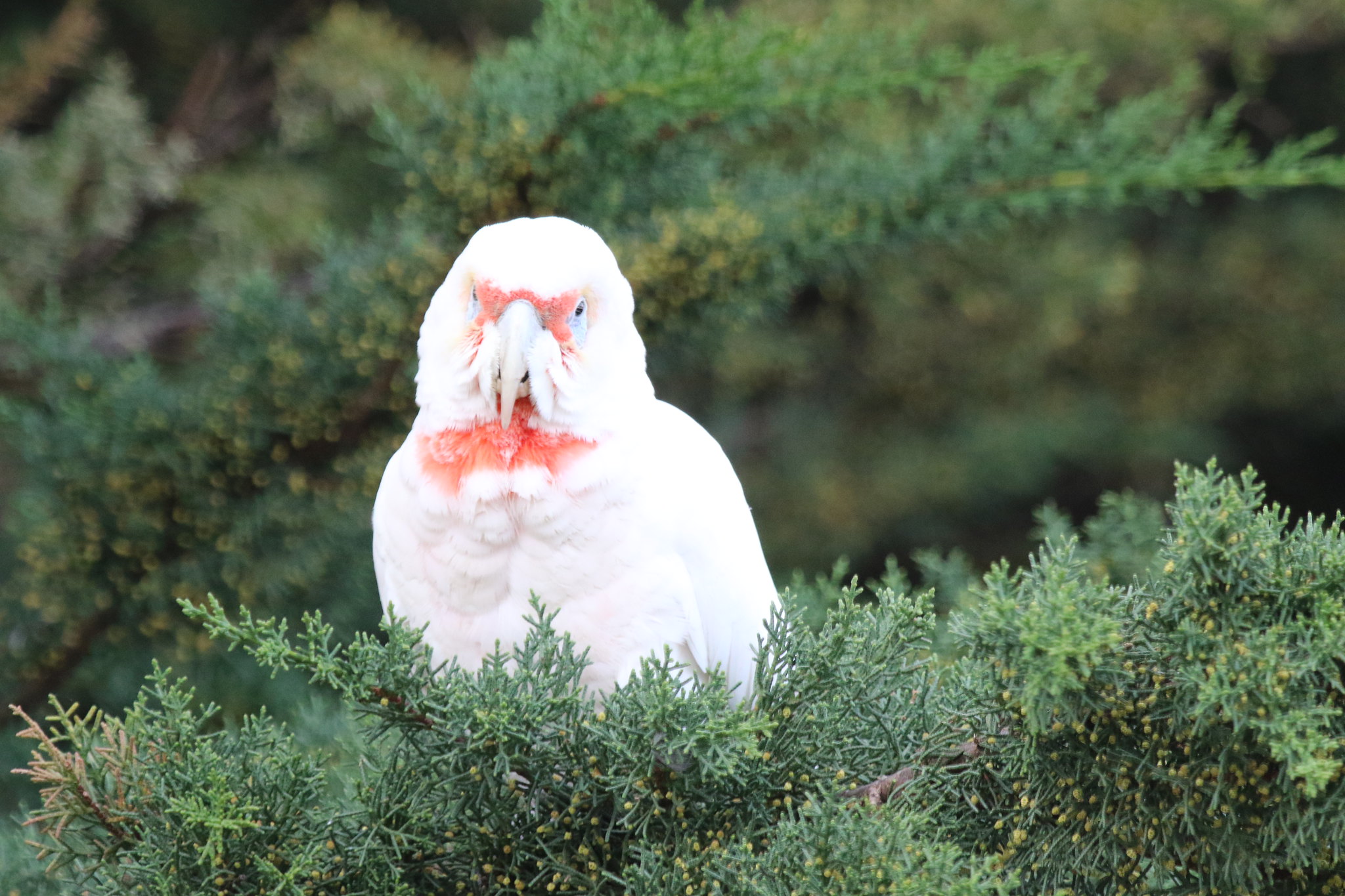 2Q5A8701 by Dale Watson, on Flickr
2Q5A8701 by Dale Watson, on Flickr
22. Mallard Mallard by Dale Watson, on Flickr
Mallard by Dale Watson, on Flickr
23. Kelp Gull adult and juvenile Kelp Gull by Dale Watson, on Flickr
Kelp Gull by Dale Watson, on Flickr Kelp Gull (Juvenile) by Dale Watson, on Flickr
Kelp Gull (Juvenile) by Dale Watson, on Flickr
24. Tasmanian Native Hen (Endemic and 1 of 3 of Australias flightless birds). Tamanian Native Hen by Dale Watson, on Flickr
Tamanian Native Hen by Dale Watson, on Flickr
25. Silver Gull.
26. Grey Teal.
27. Australasian Swamphen formerly known as Purple Swamphen. Australasian Swamp Hen by Dale Watson, on Flickr
Australasian Swamp Hen by Dale Watson, on Flickr
28. Little Wattle Bird. Little Wattle Bird by Dale Watson, on Flickr
Little Wattle Bird by Dale Watson, on Flickr
29. Laughing Kookaburra they don't sit on gum trees round here, mostly power poles/lines. Laughing Kookaburra by Dale Watson, on Flickr
Laughing Kookaburra by Dale Watson, on Flickr
30. European Goldfinch.
31. Common Blackbird. Common Blackbird by Dale Watson, on Flickr
Common Blackbird by Dale Watson, on Flickr
Dale Huonville, Tasmania
Way to go on the catch up. Some nice sightings there. I've never seen the goldfinch or Tasmanian Native Hen, good to see them here
Thanks Alex. European Goldfinch another introduced feral, but like the Common Blackbird and easy get for this challenge. Native hens are seen everywhere in Tassie. If you come down here and can't see one then you will need to get your eyes checked. Getting close to them, thats another story.
Dale Huonville, Tasmania
Great selection, Dale. Looking forward to more
sue
Went looking for some easy ones today, not alot around. Some very ordinary photos, but at least you should be able to ID
32. White Faced Heron - along way away, heavily cropped. White Faced Heron by Dale Watson, on Flickr
White Faced Heron by Dale Watson, on Flickr
33. House Sparrow. House Sparrow by Dale Watson, on Flickr
House Sparrow by Dale Watson, on Flickr
34. Brown Thornbill - was hoping it was a Tasmanian Thornbill, have not seen one yet, but the photo of the underside confirms Brown I believe. Brown Thornbill by Dale Watson, on Flickr
Brown Thornbill by Dale Watson, on Flickr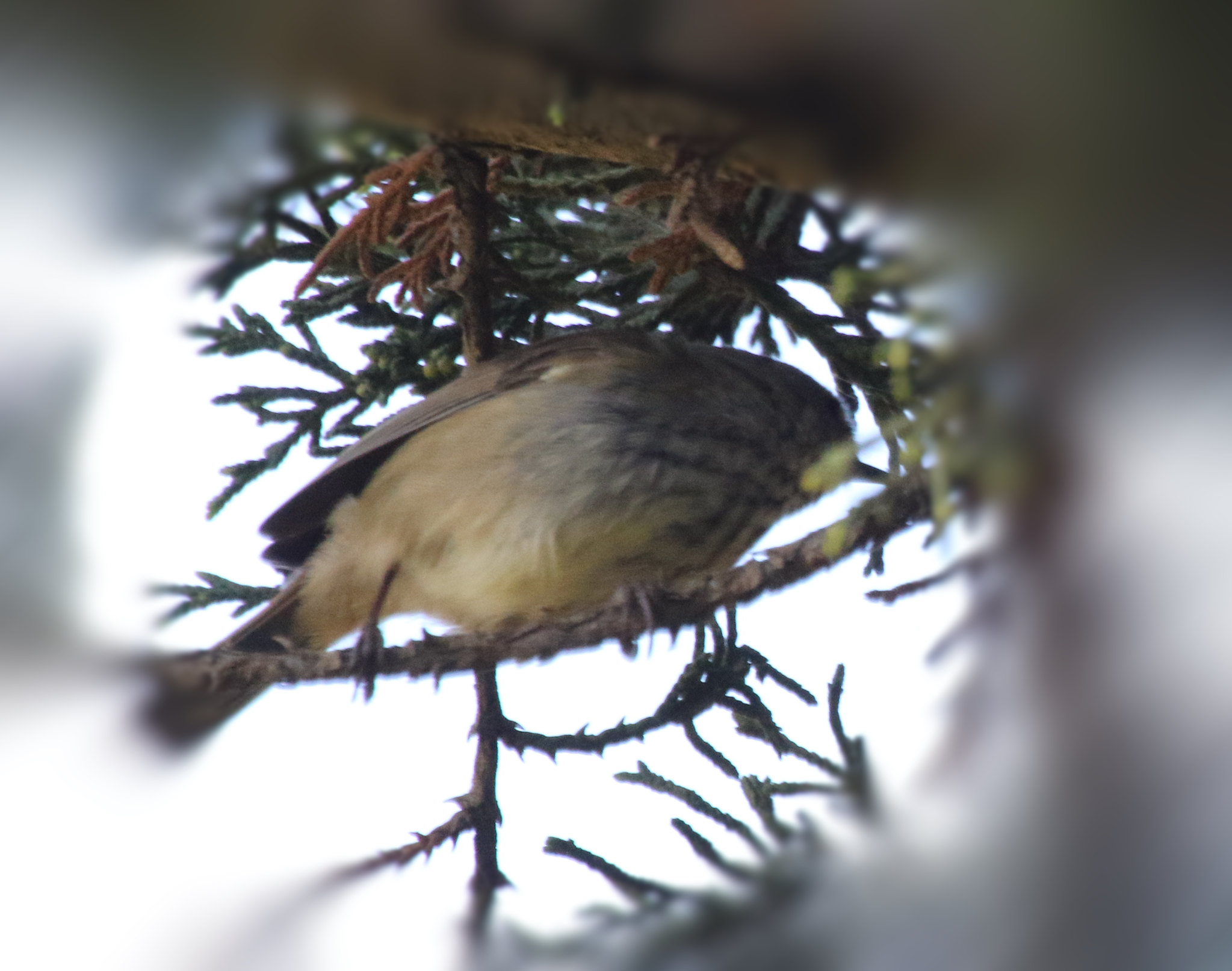 Brown Thornbill by Dale Watson, on Flickr
Brown Thornbill by Dale Watson, on Flickr
35. Yellow Wattle Bird (Tasmanian Endemic). Hope you will allow this one, If you zoom in you can see the Yellow abdomen, which seperates it from the Little Wattle Bird. Unfortunately the branch obscures the lovely yellow "Wattles". I see this bird frequently, but usually takes flight just as I see it. Hoping to score a better shot soon. Happy to remove if ID is in doubt.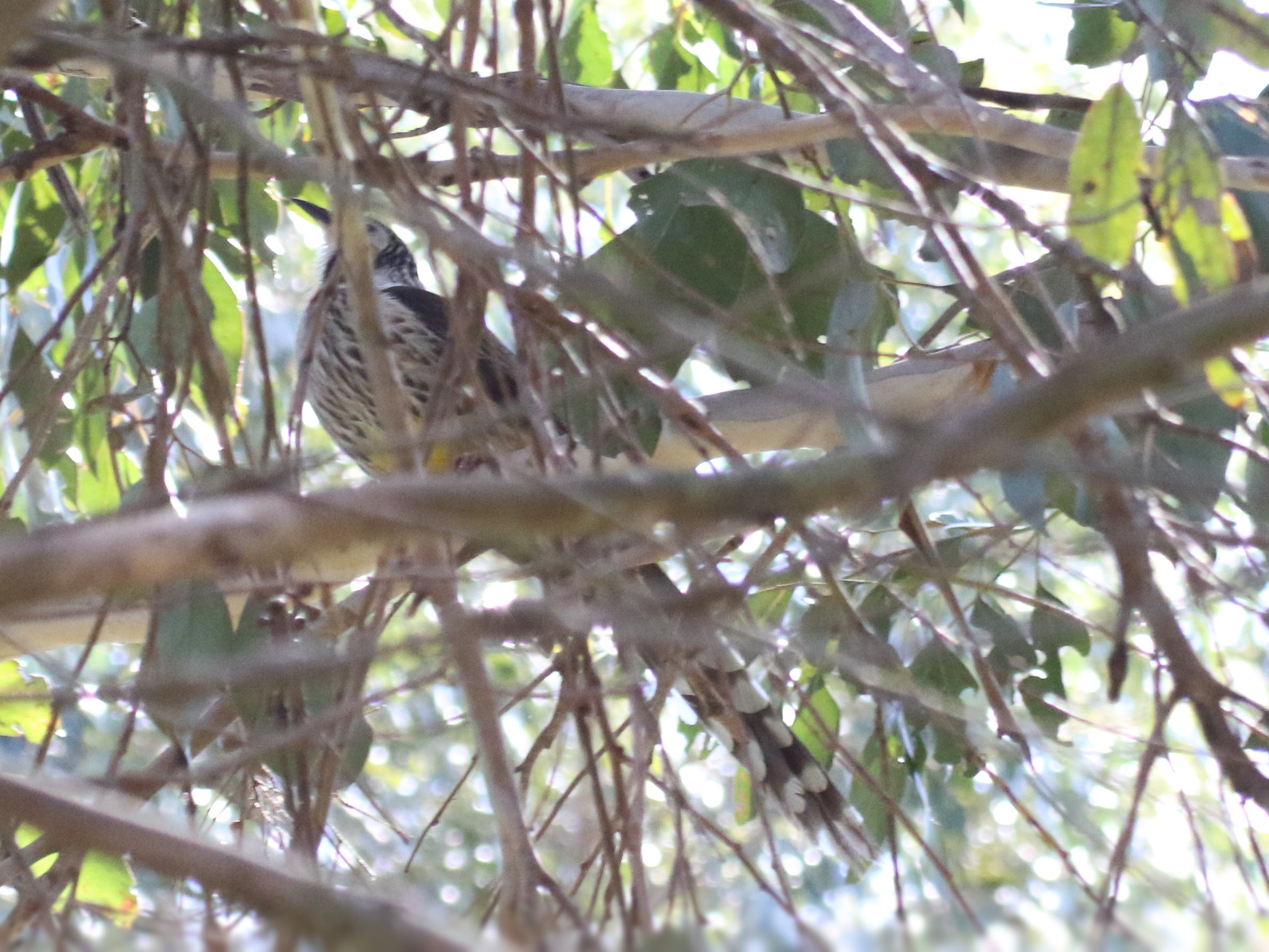 Yellow Wattle Bird by Dale Watson, on Flickr
Yellow Wattle Bird by Dale Watson, on Flickr
Dale Huonville, Tasmania
Here's a few more from me. Struggling with ISO and Shutter speed, anyway its about learning, will be happy to get any advice i can. All of these (except the Raven) are heavily cropped.
First up a better pic of number 7. Forest Raven
7. Forest Raven.
36. Little Egret. Long way off
37. Crested Tern - appeared to be both breeding and non breeding (left ofshot behind Little Egret) in this group, also another Little Egret (didn't see him initially).
38. Eastern Rosella.
39. Caspian Tern - one of the highlights for me, and to actually get a bird in flight, still identifiable!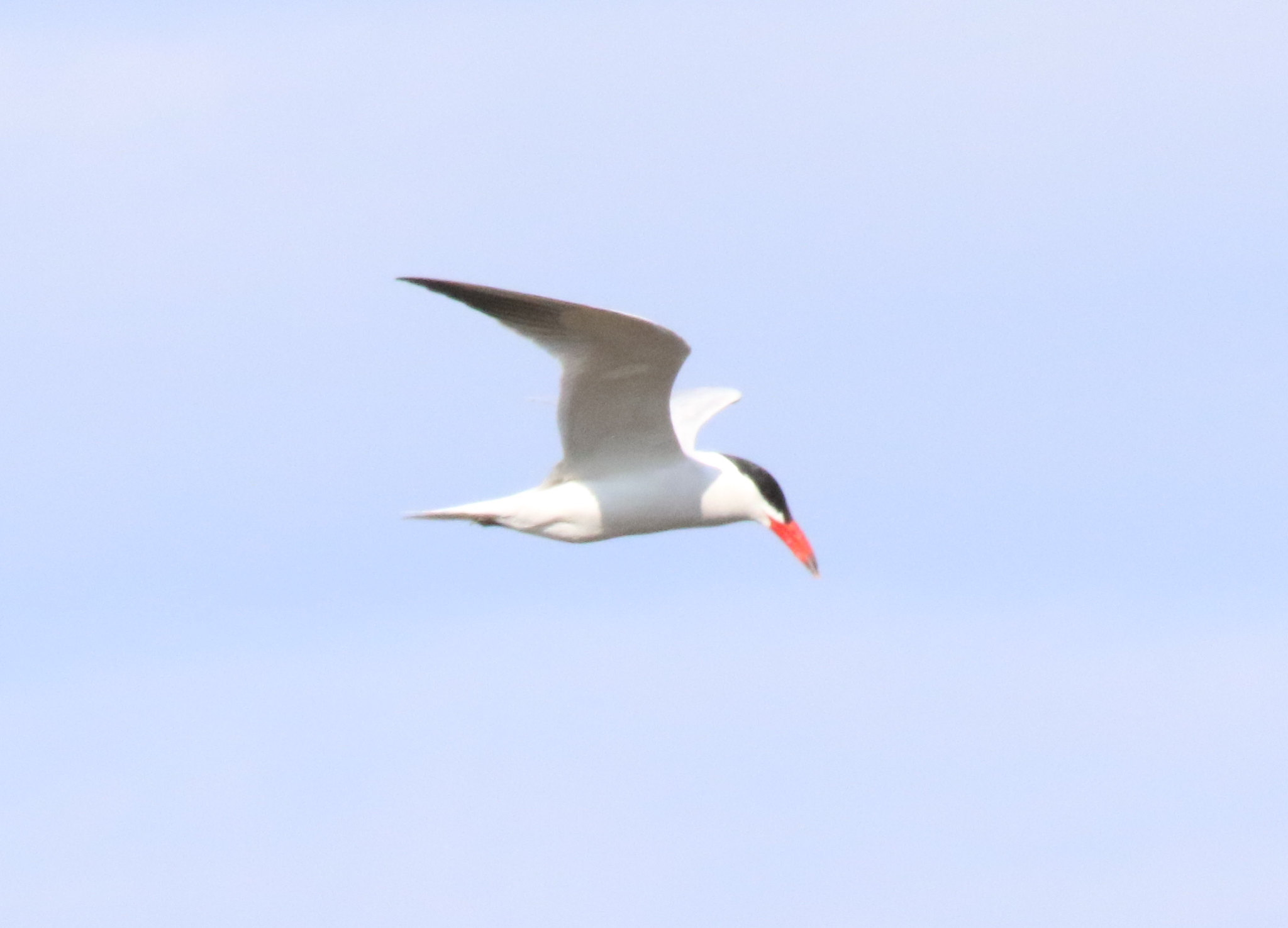 Caspian Tern by Dale Watson, on Flickr
Caspian Tern by Dale Watson, on Flickr
40. White Fronted Chat (male and female) - another highlight for me, there were a few around, but hard to get a clear line of sight. White Fronted Chat by Dale Watson, on Flickr
White Fronted Chat by Dale Watson, on Flickr
41. Noisy Miner.
42. Musk Lorikeet - Another highlight, a first "wild" sighting for me, could hear them for ages, hard to spot feeding on the Eucalypt flowers. Musk Lorikeet by Dale Watson, on Flickr
Musk Lorikeet by Dale Watson, on Flickr Musk Lorikeet by Dale Watson, on Flickr
Musk Lorikeet by Dale Watson, on Flickr
Dale Huonville, Tasmania
Some nice shots there Dale. Geat capture on the tern, I realy struggle with birds on the wing - but sometimes a tern will hover and give you a chance :-) Also very cool to see the musk lorikeets and white fronted chats, haven't seen either .
Went to some new sites today, not alot of new birds for me, but some photos I haven't taken for a while. Will post a range from today in best photos, but here are a few to add to my list for this challenge, and a couple of better photos for some I already have!
8. Little Pied Cormorant.
32. White Faced Heron - was able to get close and watch this bird for quite some time, until a lady walkng her dog came along. Much happier with this one than the earlier version. White Faced Heron by Dale Watson, on Flickr
White Faced Heron by Dale Watson, on Flickr
43. Yellow Throated Honey Eater (Tasmanian Endemic) - think I have a very poor old photo somewhere, still not the sharpest, but I think improving? Saw 3 of these today (the others were poor quality shots amongst foliage). Lucked out with this one in the open.
44. Guinea Fowl - I think these are domestic birds which cameove the fence, thats where they went when I got too close. Seen in the wild, happy to replace if "domestic" birds don't count. Guinea Fowl by Dale Watson, on Flickr
Guinea Fowl by Dale Watson, on Flickr
45. Common Starling (more "rats of the sky").
46. Galah. Galah by Dale Watson, on Flickr
Galah by Dale Watson, on Flickr
Dale Huonville, Tasmania
Well done, Dale, you are on a roll. Your photo of the Little Pied Cormorant is quite beautiful... great light & colour. Nice selection so please keep them coming. Definitely a Yellow Wattlebird in your picture.
Some nice shots there Dale - and its fun to feel the improvement, isn't it? Love the heron shots, and the little pied cormorant.
As for the guineafowl - why not, if it is shot in the wild, exotics, domestics and introduced species are all fair game :-)
47. Black Currawong Tasmanian Endemic - on the lower slopes of Mt Wellington (the backdrop to the City of Hobart), at "The Springs". Was able to confirm ID by it's call, very different from the Grey Currawong which is known as the "Clinking Currawong" because of it's unique call. They can be difficult to seperate when ID'ing. Supposed to be many species found there, but I think I was a bit late in the day! Not a great photo, but every bird counts!
48. Green Rosella another Tasmanian Endemic - "The Waterworks Reserve", a storage location for some of Hobart's drinking water. Again poor photo, and I really need to get out of bed earlier! These guys are usually everywhere, that is until this challenge started. Hope to replace with a better photo soon. Green Rosella by Dale Watson, on Flickr
Green Rosella by Dale Watson, on Flickr
49. Sulphur-Crested Cockatoo - have posted a few extra photos, and a bit of the story over in Best Photos.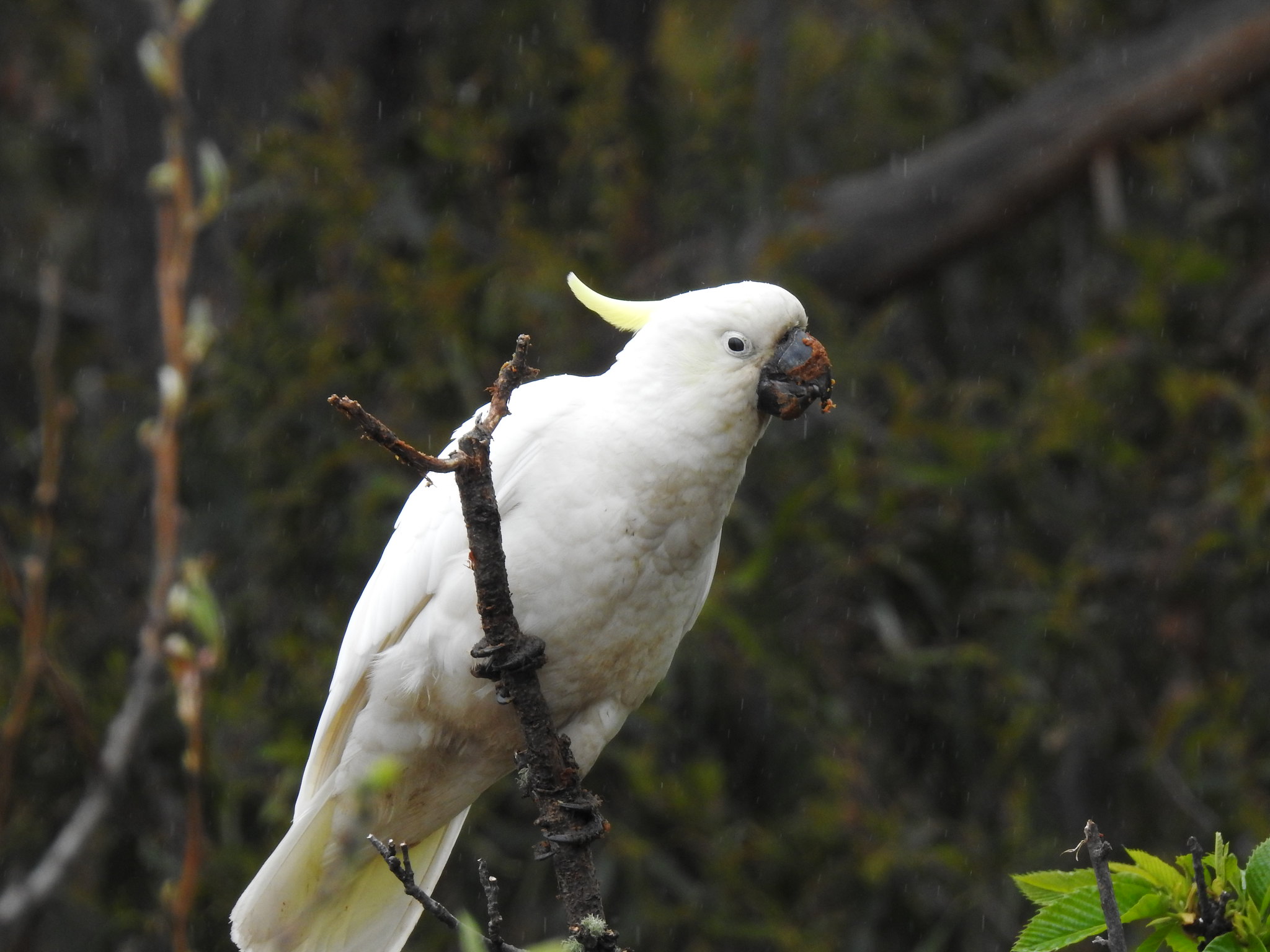 Sulphur Crested Cockatoo by Dale Watson, on Flickr
Sulphur Crested Cockatoo by Dale Watson, on Flickr
Dale Huonville, Tasmania
That green rosella is a very cool bird - I'm looking forward to seeing some of these Tassie endemics soon. Have booked for a bird walk with the Inala crew on Bruny on Boxing Day, very much looking forward to that (my first gudied walk).
Green Rosellas are lovely birds, great capture. I usually find Pardalotes & Robins at Waterworks so you were unlucky. Looking forward to more as you get to visit more places, Dale. You have some great endemics which can be hard to find such as Scrubtit, Tasmanian Scrubwren & Tasmanian Thornbill. Good luck with the search
Thanks, guys. I know where the Pardolotes are to be found at the Waterworks, (met another keen border also a Sue, was very helpful with camera and location of species advice)it was lunchtime when I was there, after spending a couple of hours wandering round the Fernglades at Ferntree on the foot of Mt Wellington. Saw a Scrubtit, too hidden for a photo, and a Bassian Thrush, both new birds for me, but it took flight as we approached (didn't see it until then). The Fernglades were quiet for the most part. Alex I hope you enjoy your time here, my advice, don't go anywhere without a camera! Again thanks for you comments and support.
Dale Huonville, Tasmania
50. Brown Falcon - was at work today, and drove past this litte precious, started carrying a camera all the time, so lucky enough to grab this pic. Hand held, not cropped or processed. Nikon Coolpix P900 bridge, zoom at 428.5 f/6.5. The settings are all auto, none the less, happy to have a photo which ID is clearly no problem (discarded about 30, started from the other side, and the light was all wrong). Fortunately, stayed put while we moved.
See these (possibly the same bird) almost daily within 1 klm on the wire, along this strecth of highway.
Dale Huonville, Tasmania
51. European or Common Greenfinch. Spotted this little one walking home from work this morning.
Related Fact Sheet - There isn't one available for this species?
Dale Huonville, Tasmania
Nice shots! That is where the P900 excels, ability to have it nearby at all times. Love the colours in your greenfinch shots
Thanks Alex, the Green Finch is another introduced species.
Upgrade for 35 Yellow Wattle Bird, this time you can actually see the wattles, not sure why they look orang/red, with yellow being seen close to the face. Photos not great, but clearly identifiable. Second photo to show red of wattle in the shade (at the base of the neck right side - heavily croped), so I don't think it is the light. Google has some photos with orange/redish tinges at the base of the wattles.
Dale Huonville, Tasmania
52. Hardhead - looking into the sun, couldn't get a better angle.
16. Superb Fairy Wren (upgrade heavily cropped but clearer I think).
Dale Huonville, Tasmania
53. Bar-tailed Godwit - the highlight of my day, finally found them! Cropped, but happy to get!
54. Common Greenshank - new to me, glad to get some photos. There was a flock of 10, with the Nikon, not cropped.
55. Sooty Oyster Catcher, absolutley gorgeous bird.
56. Swamp Harrier - poor photo heavily cropped hope you will allow - can see the white rump, was maybe 250m high and well off in the distance. 1st is original, 2nd is the crop.
57. Striated Pardolote - another highlight, poor photo, actually thought I had missed the photo!
Dale Huonville, Tasmania
Great catches, Dale. That Greenfinch and Falcon are nice to get as are the shorebirds. This challenge does keep you on the lookout, does it not?
Sue
Thanks for posting, Dale, nice to see the greenshanks, haven't seen them before. Love the pardalotes, but they are frustratingly difficult to photograph. I have a couple in the little woods near me, and I hear them all the time but very seldom see them. And those oystercatchers are really spectacular birds, aren't they - amazing colour contrast.
Thankyou both, really enjoying my photography at the moment. Yes Alex, I saw maybe 20 Pardolotes, but only one stayed in the shot, and I didn't know it was there til I got home.
Have been looking for the shorebirds for a while, still haven't seen the Eastern Curlews or the variety of Plovers often seen at Orielton Lagoon.
Dale Huonville, Tasmania
Loving the photos Dale and seeing the Tasmanian Endemic species
Thanks, good to see you back Devster, you going to try and put a few up yourself?
Dale Huonville, Tasmania
This one's for Sue, I am not counting it, it's a few years old, my one and only sighting and photo of a Dusky Robin, taken through a dirty kitchen window with a phone, - heavily cropped. Hopefully a better photo one day!
url=https://flic.kr/p/2hGR7ys] [/url]Dusky Robin by Dale Watson, on Flickr
[/url]Dusky Robin by Dale Watson, on Flickr
Dale Huonville, Tasmania
Thank you, Dale. I love Robins & it is a cutie.
Waterworks Reserve Hobart - many birds heard, not alot sighted. Saw a Scrubtit, but wasn't quick enough, heard a Ground Parrot calling, but couldn't find them.
Replacement or extra 6. Great Cormorant.
Replacement for 57. Striated Pardolote, still not a great shot, but better, quite a few around, but hard to get good photos. And as Dev says, theres always a branch or leaf in the way, which of course the autofocus focused on!
58. Scarlet Robin, a definite EBC, saw a side on view to determine the black chin. Couldn't get close enough!
59. Grey Currawong - another EBC, ID by call, they were calling to each other, appeared to be several pairs. Our Greys tend to be darker than their mainalnd cousins.
60. Grey Shrike Thrush, a few photos, because I was very happy with the results (Nikon P900, difficult light). Grey Shrike-Thrush by Dale Watson, on Flickr
Grey Shrike-Thrush by Dale Watson, on Flickr Grey Shrike-Thrush by Dale Watson, on Flickr
Grey Shrike-Thrush by Dale Watson, on Flickr
Dale Huonville, Tasmania
Love the Grey Shrike-thrush Dale. All the others are deifinately recognisable. Glad I'm not the only one that always has the branch or leaf in the way. It's a bird photographers nightmare.
Grey shrike-thrush is a good one. Yes, the P900 really struggles in that low light forest environment. Something that has really helped my keeper rate Dale is setting the AF area to Manual-Spot (and AF Mode to Continuous) when shooting small birds. The camera still struggles to AF in low light / low contrast, but the spot really helps it avoid focusing on branches, backgrounds etc, as long as you get it hard on the bird. And if the bird is cooperative enough, keep taking photos, re-focusing every time, trying to put the spot on its eye. I shoot in small bursts of 2-3 each time, re-focus, do it again, until I'm certain I have a decent shot (or, more likely, the bird has gone). That way I'm more likely to have a bird in focus in some of the images. But I still throw away 80-90% of my woodland shots, compared to 50-75% of my general bird shots.
Thanks Dev and Alex, seem to be coping with poor light, only if it's really dark! I think the main problem with the P900 is the really poor quality view finder.
Will play with the focus options and see how I go.
Again thanks for the feedback.
Dale Huonville, Tasmania
61. Eastern Great Egret (I hope) Goulds Lagoon posed for about 10 minutes, but light was behind it, not great but happy to see for the 1st time, and get a photo. ID based on gape extending beyond the eye, and the "kink" in the neck. Eastern Great Egret by Dale Watson, on Flickr
Eastern Great Egret by Dale Watson, on Flickr Eastern Great Egret by Dale Watson, on Flickr
Eastern Great Egret by Dale Watson, on Flickr
Dale Huonville, Tasmania
Great shot of the Grey Shrike-thrush, Dale and well done with the Great Egret. White birds can be challenging as is back lighting. You have not blown the white and the bird is very clear so a successful capture. Your numbers are climbing as well and it is always good to see a new bird.
Nice one on the egret - exciting to see new birds :-) I'm lucky enough to have these regularly near me - beautiful birds, and their breeding plumage is awesome.
Well done Dale. I agree with your ID for the reasons you mentioned. The bird really stands out in that background and I love the breeding plumage.
Thanks for all your comments. Seeing a few birds in breeding plumage, but appear solitary. I hope Mumma or Pappa is off tending young somewhere. I did also see the Freckled Ducks again, windy, long way off, a few photos, it nothing grand. Apparently they have taken up residents in a couple of places, have been at Gould's Lagoon since 2013. Didn't appear to have young , like the PBDs and Mallards.
Dale Huonville, Tasmania
Oh my, that is a fantastic shot of the egret, beautiful!
Thanks Pip. Heres a couple from today, and an upgrade for my 52. Hardhead.
62. Domestic Geese with family.
63. Black Faced Cormorant. This one was constantly preening and scratching.
64. White Bellied Sea Eagle. Thought this was going to be an EBC on 1st sighting - about 600+ metres away. Was able to get a bit closer. Heavily cropped, none the less I am reasonably pleased to get some ID quality photos (would have been happier if I couldget closer, but as you can see it took flight).
No cropping, and as close as i could get.
Heavily Cropped.
Dale Huonville, Tasmania
Love that sea eagle, and have never seen the black-faced cormorant, very cool.
Great shot of the Hardhead and nice to see the Black-faced Cormorant. Also a pretty good capture of the WBSE even if cropped. You are having some great success with the camera, Dale.
Don't you recon Hardheads have evil eyes. You captured it well. I Love the WBSE shots Dale. The croped ones came out well too.
Thanks all. I agree, Dev, Hardheads eyes look like something from a horror movie, like they could pierce straight through you. I was pretty happy with the WBSE, the crop doesn't show how far away it really was. That one is local to my area, often see but hard to get close to (terrain and skittish).
Dale Huonville, Tasmania
A couple for the EBC folder!
65. Grey Fantail - heavily cropped.
66. Yellow Tailed Black Cockatoo - these guys announced their arrival in the usual loud fashion, only to perch almost directly overhead, and high in the tree. The bird on the left (photo with 2) appears to be a male - pink eye ring, maybe a pair cuddling?
Dale Huonville, Tasmania
Nice ones ,Dale. good to see that you are still finding some new birds in your area. It is so frustrating when they stay up high and you have only an underside shot! Looking forward to some more soon.
A few from today.
14.Welcome Swallow - definite upgrades, these with the Nikon.
67. New Holland Honeyeater - another EBC, little blighter wouldn't turn front on, or even a decent side on shot! This with the Canon.
68. Bassian Thrush - a highlight for me, sighted onl once before, and now some reasonable photos - this time the Canon.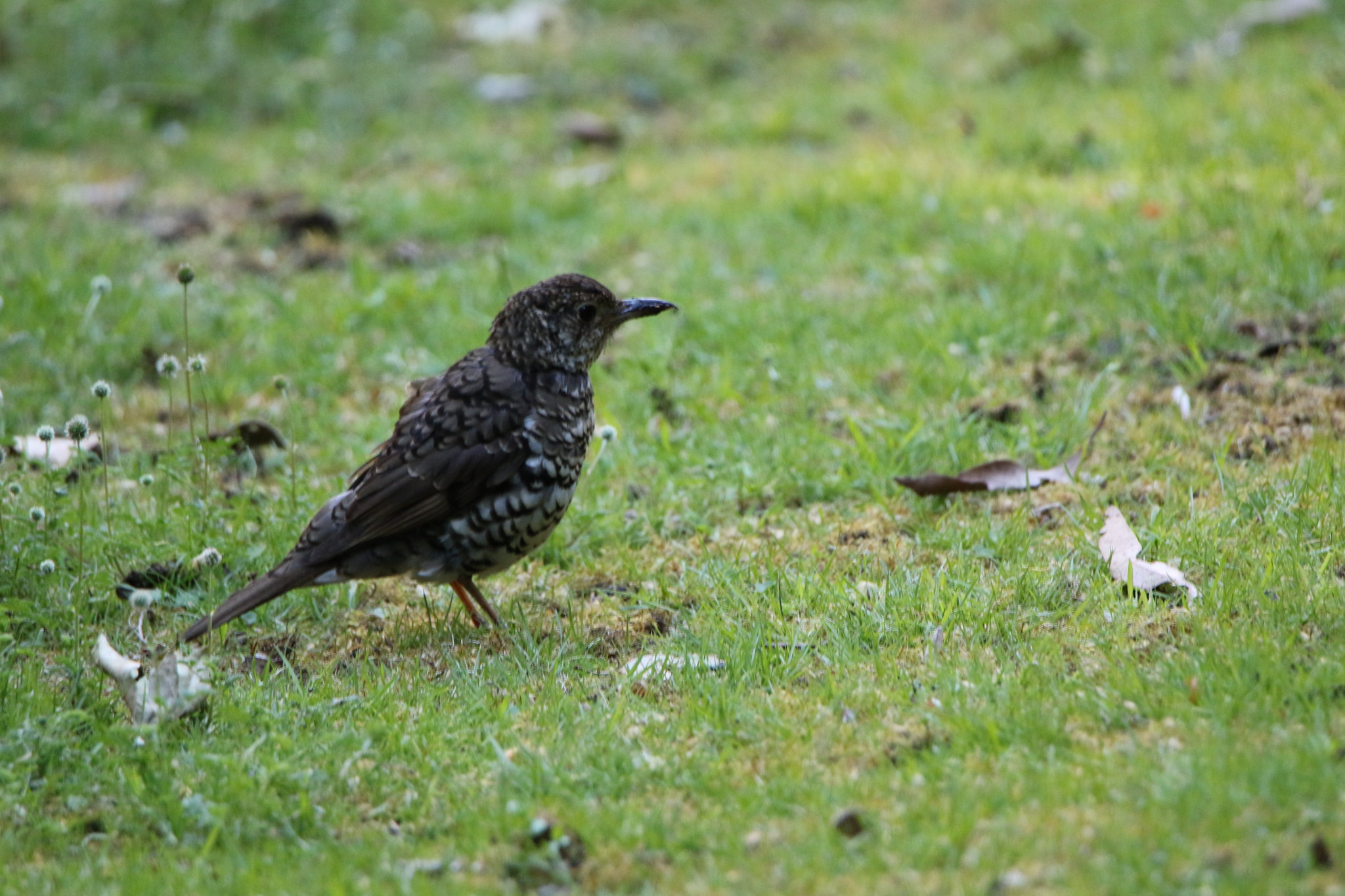 Bassian Thrush by Dale Watson, on Flickr
Bassian Thrush by Dale Watson, on Flickr
Complete with the obligatory Dev Distraction, not twigs/leaves but just as annoying! Bassian Thrush by Dale Watson, on Flickr
Bassian Thrush by Dale Watson, on Flickr
Dale Huonville, Tasmania
I especially like that last Bassian Thrush shot as I find those flowers with all that lush green look wonderful. In my opinion, they do not detract but actually add to the shot. You are also getting the numbers up considering you are confined to Tasmania fro this challenge. Well done. We are all out there looking.
Pages